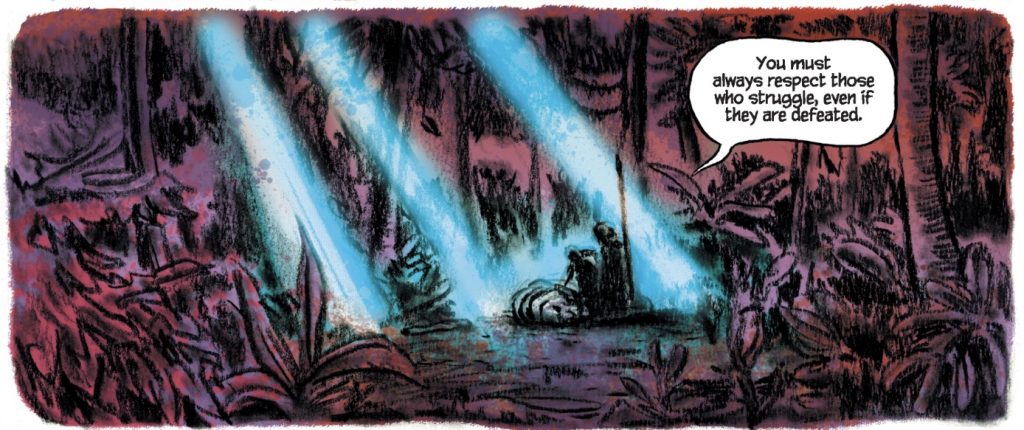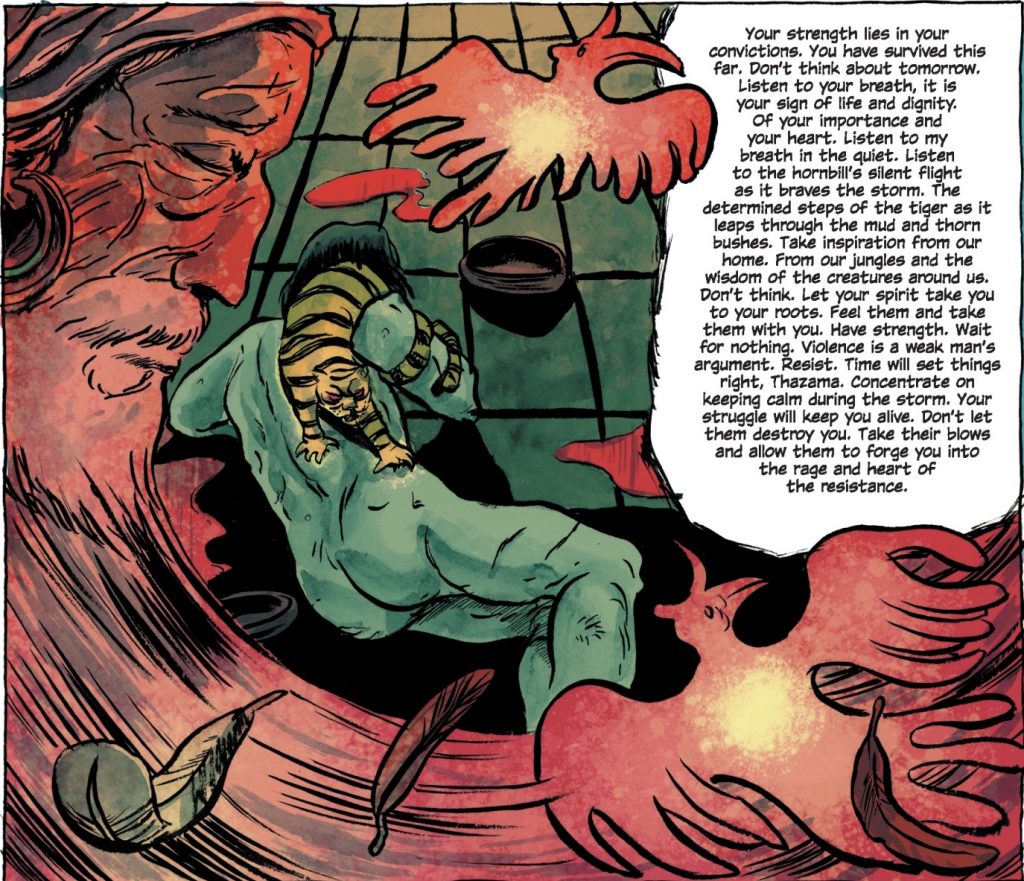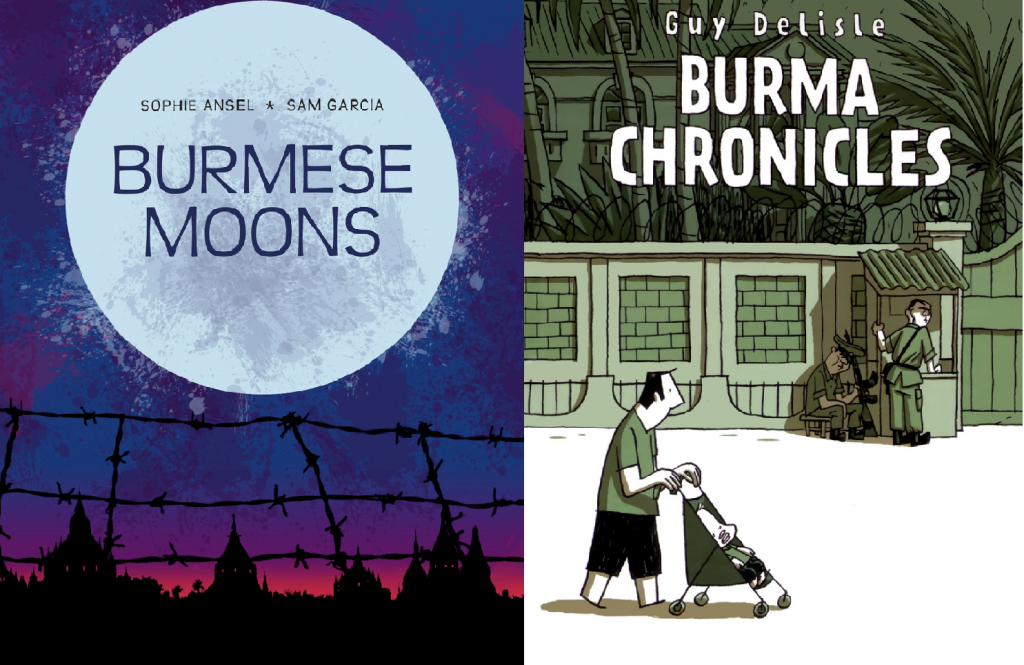
I spent some time last month reading two graphic novels, Burmese Moons by Sophie Ansel and Sam Garcia and Burma Chronicles by Guy Delisle, to a sobering realisation of how little I know of Burma.
I recommend reading Burmese Moons first, to be thoroughly awakened by its mesmerising art and prose, to learn about the atrocities, and experience discomfiture through Garcia’s illustrations. Burma Chronicles is salve, and should be read second. The two graphic novels have starkly different art styles. The art style in the former is evocative, illustrating the suffering and horror of the Burmese with nuance and movement. The latter is a travel diary that treats Burma with a certain dispassionate benign curiosity characteristic to all those who travel to alien lands. Its art is relatively simplistic and the dialogue honest and engaging.

The British colonialists left Burma in 1948, which was around the same time as the rest of the subcontinent (India, Pakistan, Sri Lanka) claimed its independence. The partition of India meant bloodshed, horrific communal atrocities, and the birth of an irresolvable enmity. Alarmed by these developments, Ambedkar, Patel, Nehru, and others set upon the onerous task of unifying fragmented India into a national consciousness. Burma, however, did not seek unity amongst its own ethnic people and has since devolved into a lost nation.
The only memories I have relating to Myanmar are hearing my mother exclaim that Aung San Suu Kyi had been freed from house arrest, and then some years later, my mother telling me in a low, disappointed voice that Suu Kyi was not sympathetic toward the Rohingya people and had instead defended the military junta’s atrocities against them. Suu Kyi was Buddhist, we were puzzled, did Buddha not teach about compassion?* As it is common with troubles that are farther away from us, we contended with managing our own and soon forgot about Myanmar.
Both graphic novels mention Suu Kyi. Guy Delisle is delightfully idiotic about the Nobel Peace Prize winner thing.
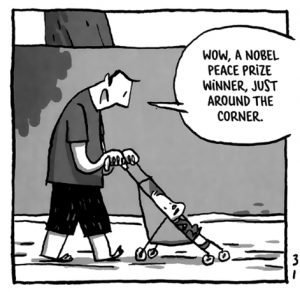
Having been given directions to Suu Kyi’s house, Delisle sets off with confidence because he is just a dad out walking with his kid. Unfortunately, the junta stops him at the gates and he must turn back. However, the little adventure is not over yet.
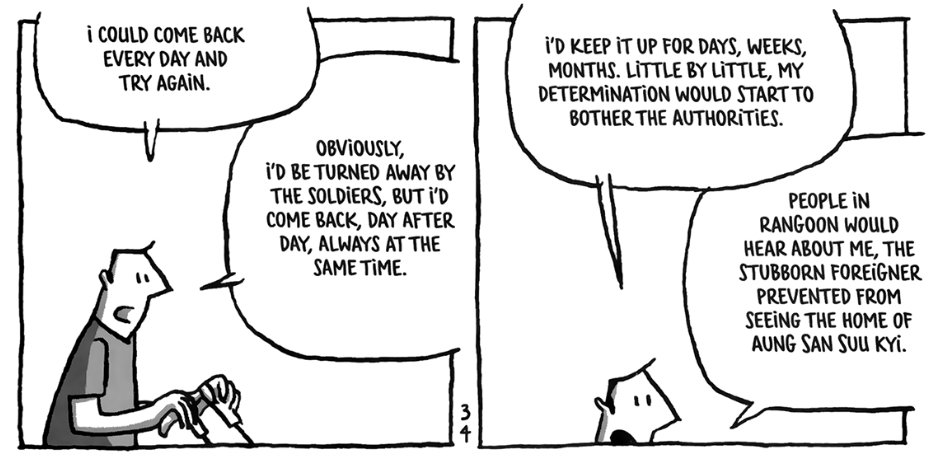
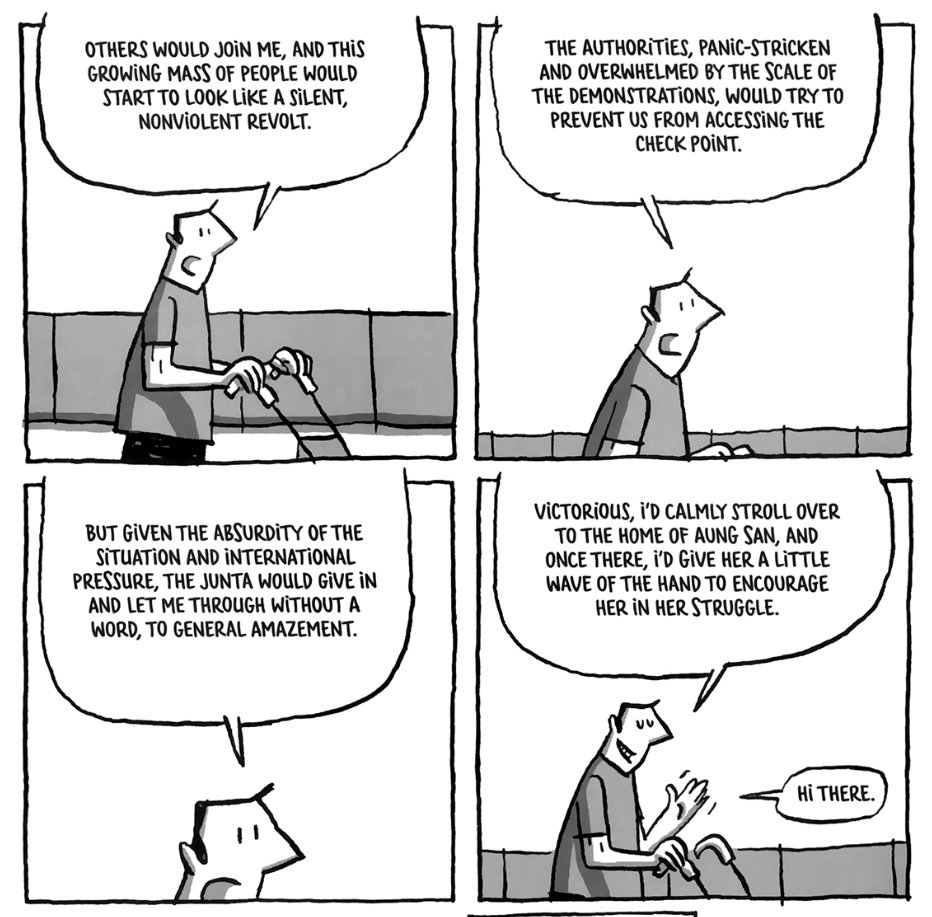
In Burmese Moons, Suu Kyi appears in a little biographical sketch. It is acknowledged that Suu Kyi is a crucial figure in the consciousness of the people of Myanmar, and yet, there is her reluctance to be a leader of all her people.

I will admit to my ignorance of the humanitarian crisis in Burma before I read these graphic novels. I was in Europe, living up the last of my 20s in a lab coat, worrying about all the wrong things. Reading these graphic novels has been an education.
* Suu Kyi is being a political pragmatist.
